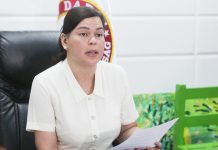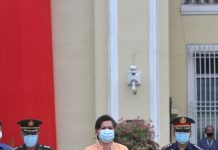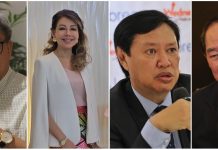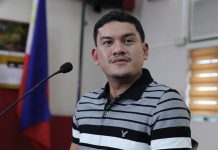NEW Corella, Davao del Norte is a Banana Republic, literally, with virtually thousands of hectares planted to export bananas. Just 30 minutes away from booming Tagum City, this third class municipality strives to provide better access facilities such as roads and bridges for its 44, 953 residents—almost 90 percent of them farmers.
New Corella’s smallest barangay—New Sambog—is no different from the other 20 barangays of the municipality which is a recipient of the government’s Kapit Bisig Laban sa Kahirapan—Comprehensive Integrated Delivery of Social Services (KALAHI-CIDSS or KC). Multinational banana firms also operate in New Sambog and employ local residents, mostly men. But despite the huge investment, the quality of life of the people of this barangay composed of more than 800 people remain wanting, with almost all of them considering themselves poor.
“Our common perception that we are poor is a result of the major shift in our farming practices,” 60-year old Luciano Plaza told EDGE Davao in an exclusive interview at the barangay. Before the banana plantations came farmers were sufficiently earning from their small farms, ranging from one to more than five hectares, Plaza said.
An average rice farmer, according to Plaza, has been earning P30,000 (around US$690) per harvest in three harvests per year. Additional sources of income were also derived from vegetables and root crops while others earn from selling farm animals.
“Farming has been our way of life and it has been our strength as people of New Sambog,” said Plaza.
But instant employment with banana firms has forced many farmers to abandon their farms. “The perennial use of chemicals and synthetic fertilizers to increase higher yields have substantially reduced instead our income and eventually destroyed our soil,” farmer Luzviminda Revita lamented.
“Worse,” she added, “many farming interventions were introduced in our area but we were not given the chance to air our side and decide for our own. They were implemented without due consultation among the people.”
Community-driven and participatory
Just across the way from the barangay hall, the community has spared a one hectare farmland to serve as their model farm for their project on sustainable agriculture and diversified organic farming system.
“But deciding and prioritizing on the project was not easy since many of us want individual projects,” shared Angelita Magallon, one of the pioneering migrants who came all the way from Bohol in the late 1940s. There were around 10 projects presented during the Municipal Inter-Barangay Forum (MIBF)—a process where people choose among themselves which project they want to be funded by KALAHI-CIDSS.
Magallon said the Participatory Situation Analysis (PSA) enabled them to extensively appraise their current socio-economic and political situation.
“There were diverse interests and priorities but through the (PSA) process, we came into common terms and agreed that we will implement diversified organic farming because it will further enhance our capacity to manage small yet economically viable farms,” the former teacher who turned full—time farmer said.
The barangay also spends and shoulders the series of barangay assemblies called for the purpose of the identifying the project. “Instead of using some of our funds for other social activities which we consider as irrelevant, we focus instead of utilizing our funds for people to come together and discuss about their development,” Restituto Salang, New Sambog barangay chair said.
Each assembly was attended by more than 80 percent of the people, added Magallon. She estimates that the barangay spent around P10,000 (around US$250) for the five (5) assemblies conducted.
The KC project also allows communities to access resources for their planned development interventions. LGUs are also taught to practice a more democratic and participatory means of governance, where development agendas are planned and executed together with their local constituents.
Accountable and transparent
In its recent assessment of the project, the World Bank stressed that KC is about “more than just improving infrastructure—the project is helping to put in place more transparent and accountable systems of governance with many decisions taken by the community as a whole.”
“Communities identify priorities based on an assessment of their own needs and contend with other villages through an inter-barangay forum for selection on the basis of need and other factors. Funds are transferred directly to bank accounts managed by community groups and regular reports are made to the community through barangay assembly meetings,” the WB said.
The bank also noted that “procurement of goods and services is undertaken in an open and transparent manner with community groups themselves monitoring the implementation of activities. Community associations are also playing a role in the operation and maintenance of projects, helping to ensure their continued sustainability.”
Engineer Santos Eusebio, regional community infrastructure specialist, complained before a forum with state auditors of the Davao region last week about the proliferation of multi-sourcing of village projects in some areas.
“We’ve found out that some barangays are securing funds from us for a water system project even though it has been funded already by two agencies—the municipal government and by the congressional district,” Eusebio revealed.
Despite the MIBF process, the said community association was proposing for a whopping P1.5 million (US$34,506) for a simple water pipeline. But with the installation of the Grievance Redress Mechanism, double-funding scheme of the said association was checked and eventually exposed.
State auditors led by Nilda Escalante also emphasized the need for on-site physical auditing of infrastructures especially in far-flung areas. During the Orientation of Provincial and Municipal COA Auditors on KALAHI-CIDSS, some senior state auditors have complained about the inaccessibility of some areas where the project is being implemented.
Empowering women-farmers
The model farm where practices of sustainable agriculture and diversified farming are to be applied was developed mostly by women.
Marianne Ambingan, chair of the Barangay Sub-Project Management Committee (BSPMC), stressed that women have actively participated in all the processes of the project. “The Community Empowerment Activity Cycle (CEAC) allows many women to engage in all project aspects, ranging from social preparation, sub-project identification, preparation, selection and approval stage, implementation and operations, upto to the transition stage,” said Ambingan, who also serves as volunteer of the project.
Revita said diversified farming also provides women with new economic opportunities since they can “raise farm animals while cultivating agricultural crops and at the same nurture their families.”
Ambingan said women also comprise the majority of the several committees created to ensure “successful implementation” of the project.
In its March 2011 issue, the Millennium Challenge Corporation in its ‘Strengthening MCC’s Gender Policy’ noted that “gender integration can be improved with financial resources and targeted plans.”
MCC’s Philippines Compact includes a project designed to improve lives in rural areas through small-scale, community-driven development projects in communities where poverty exceeds the national average. This project, called Kalahi-CIDSS, is supporting and building on the participatory planning, implementation and evaluation methodology developed by the Philippines Department of Social Welfare and Development in collaboration with the World Bank.
“With early and consistent involvement of social and gender specialists from both the MCC and the government of the Philippines, gender analysis is improving the design of Kalahi-CIDSS. In addition, the compact funded a $1 million Gender Incentive Grant under Kalahi-CIDSS to encourage innovation in addressing gender equality in the program,” the policy paper noted.
Grassroots, volunteer managed funds
A total of P1.15 million (US$26, 478) grant fund was awarded to the farmers of New Sambog for their diversified farming project. Of the total, the Department of Social Welfare and Development allotted P895,000 (US$20, 591), the municipal government with P224,000 (US$ 5, 153) and the barangay with P31,000 (US$713).
Since funds are downloaded directly to the communities, the total amount was deposited to the community account and co-managed and co-disbursed by the communities themselves.
Ambingan said the community was not quite sure if they are able to manage the money. “The huge trust given to us and the process of transparency as to where the funds are going opened a window for our appreciation of the project,” she said.
Regional financial adviser Ma. Annabelle Jabla shared during the Regional LGU Forum and Writeshop on Conditions and Precedents of the KC Project in Davao City that “volunteers are taught to effectively manage the grant funds awarded to them.”
“We want to impart the value of co-ownership and dissuade from the old-tradition of dole-out approaches in development projects,” she told participants from the poor municipalities of Tarragona, Sto. Tomas, Manay, and Mabini. This is the reason, she stressed, that a considerable amount is being allocated for capacity-building of the volunteers.






